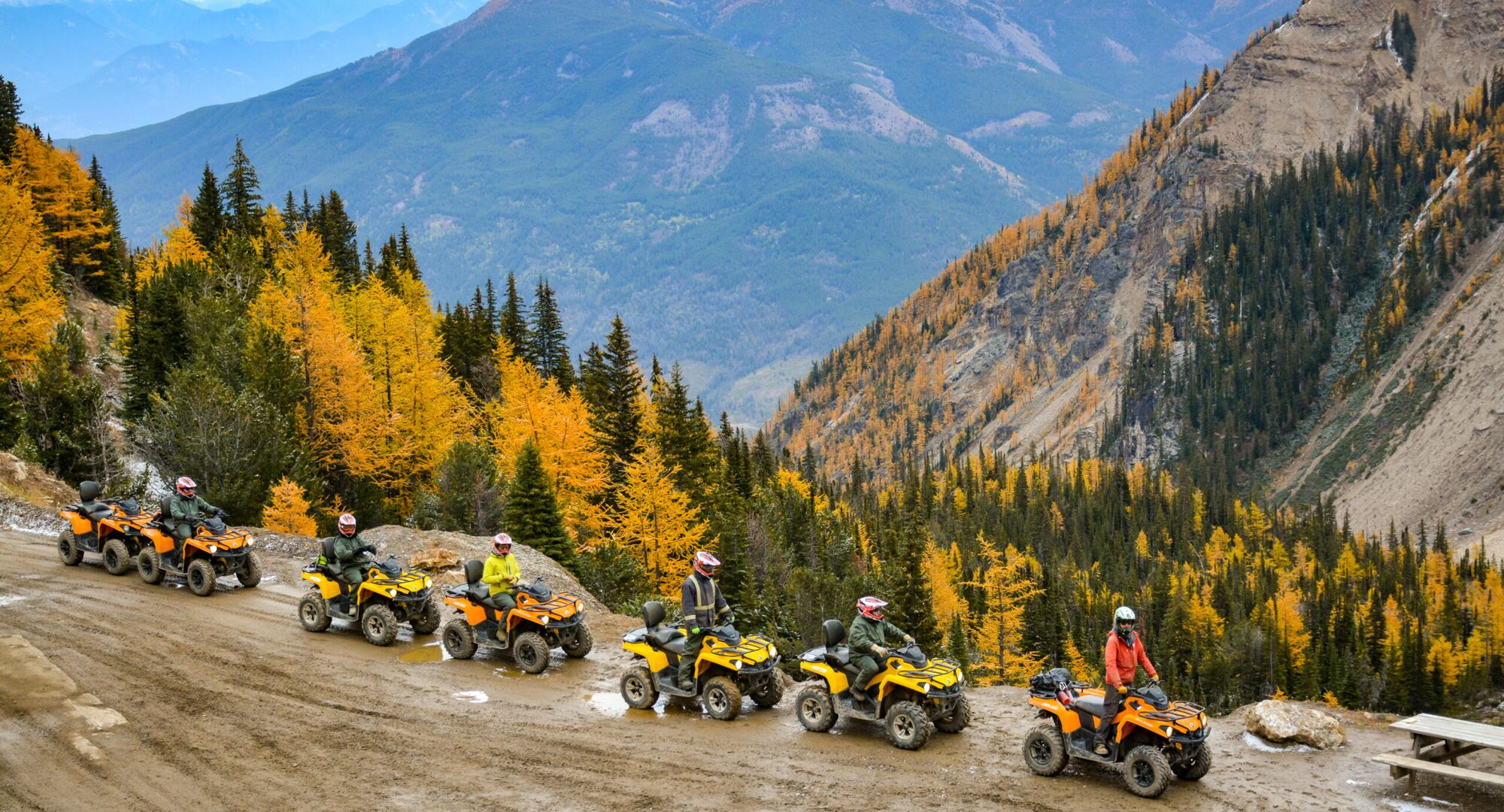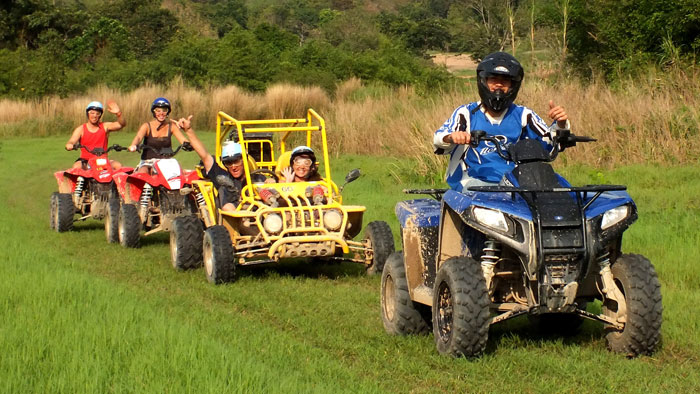Browse the Wilderness with Confidence: ATV Solutions Await
Mastering the Trails: ATV Riding Tips and Strategies
Grasping the Trails: ATV Riding Tips and Techniques is an extensive guidebook designed to furnish bikers with the knowledge and abilities needed to browse off-road terrains with confidence and accuracy. This expertly crafted source explores different aspects of ATV riding, consisting of proper body placing, navigating uphill and downhill tracks, grasping limited turns, navigating challenges, and embracing important safety and security precautions. Created in a specialist style, this overview emphasizes the relevance of technique and uses practical advice for motorcyclists of all levels. With an emphasis on safety and security and skill advancement, Understanding the Trails is a must-have for ATV lovers wanting to enhance their riding capacities and tackle any type of route with finesse.
Relevance of Correct Body Positioning
Correct body placing is essential for making best use of control and security while riding an ATV. When riding off-road cars like ATVs, preserving the right body placement is critical for accomplishing ideal control and stability. By positioning your body correctly, you can efficiently distribute your weight and maneuver the ATV more successfully, allowing for a safer and more enjoyable ride.
One secret facet of correct body placing is preserving a well balanced posture. This means keeping your body upright and centered over the ATV at all times. By doing so, you can evenly distribute your weight between the front and rear wheels, which helps boost grip and security (atv). In addition, maintaining your body upright enables you to better soak up bumps and shocks, decreasing the effect on your body and enhancing overall convenience.
Additionally, it is crucial to hold the handlebars firmly and maintain your arms somewhat bent. This setting permits for much better control and maneuverability, as it allows you to rapidly react to modifications in terrain or unexpected barriers. Keeping your arms relaxed and somewhat bent likewise helps soak up resonances and shocks, decreasing tiredness and boosting general control.
Tips for Navigating Uphill and Downhill Trails
When navigating uphill and downhill routes on an ATV, cyclists have to use strategic techniques to safely and properly maneuver via differing surfaces. This assists to prevent the ATV from flipping backwards.

Understanding Limited Transforms and Steering Barriers
To successfully navigate limited turns and maneuver challenges on an ATV, cyclists need to utilize effective strategies and preserve a concentrated strategy. Additionally, leaning onward and clutching the handlebars securely permits for far better control over the ATV's guiding. By looking ahead, bikers can expect any type of potential obstacles and change their speed and body position as necessary.
When it comes to maneuvering challenges, such as rocks, dropped trees, or deep ruts, bikers ought to approach them with care. Keeping a loosened grasp on the handlebars and allowing the ATV to move underneath you will help preserve balance and control. These strategies, coupled with technique and experience, will certainly make it possible for riders to confidently navigate tight turns and get over challenges on their ATV journeys.
Necessary Security Precautions for ATV Riding
ATV motorcyclists have to focus on adhering to essential safety precautions to ensure a safe and secure and satisfying riding experience. These safety precautions are vital in reducing the threats associated with ATV safeguarding the motorcyclist and riding from prospective accidents or injuries.
Moreover, it is essential to acquaint oneself with the ATV and its controls before riding. Recognizing exactly how to run the automobile correctly, consisting of braking, increasing, and shifting equipments, is essential for preserving control and avoiding mishaps. Examining the ATV's condition prior to each trip is also vital. This includes checking the tires, brakes, lights, and various other components to more info here ensure they are in great functioning order.

Methods for Riding in Different Surfaces
Familiarizing oneself with the strategies for riding in different terrains is crucial for ATV riders to navigate numerous landscapes safely and properly. Each surface provides its very own difficulties and requires certain skills and strategies to make certain a smooth and regulated experience.
When riding on rough and uneven surfaces, it is important to maintain an unwinded and well balanced position. Maintaining your body adaptable and loose will enable you to absorb shocks and maintain control over the ATV. Additionally, it is essential to maintain a consistent rate and prevent abrupt acceleration or braking, as this can bring about loss of traction and prospective accidents.
For muddy or sandy terrains, it is suggested to lower tire stress to increase grip. Reducing the tire stress permits the tires to grip the ground much better, preventing the ATV from getting stuck. It is likewise advisable to use a higher gear and keep a consistent rate to stop the wheels from spinning and digging into the terrain.
When riding on steep inclines or decreases, it is crucial to shift your body weight forward or backward to maintain balance. Leaning forward while climbing up uphill will certainly protect against the ATV from turning backwards, while leaning backwards while coming down look at here will certainly stop the ATV from flipping forward. It is crucial to utilize the suitable gears and prevent sudden acceleration or stopping, as this can trigger loss of control and potential crashes.
Final Thought
To conclude, grasping ATV riding requires correct body positioning, competent navigation of uphill and downhill routes, and the capability to steer limited turns and challenges. It is also vital to focus on safety by taking essential precautions. Additionally, motorcyclists ought to be adept at riding in various terrains for a well-rounded experience. By exercising these techniques and adhering to security standards, ATV bikers can boost their skills and delight in the routes to their max possibility.
When taking on downhill trails, motorcyclists should shift their body weight backward to preserve security and protect against image source the ATV from flipping ahead.To effectively browse tight turns and maneuver obstacles on an ATV, motorcyclists have to employ efficient strategies and maintain a focused method.ATV motorcyclists have to prioritize adhering to critical safety precautions to guarantee a safe and delightful riding experience. These safety and security preventative measures are necessary in minimizing the dangers associated with ATV riding and protecting the biker from prospective mishaps or injuries. Leaning ahead while climbing up uphill will prevent the ATV from flipping in reverse, while leaning in reverse while coming down will certainly stop the ATV from turning onward.